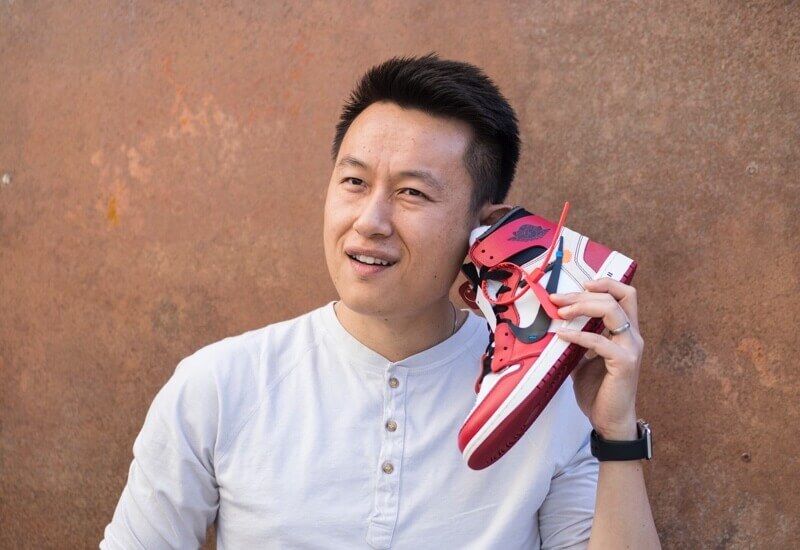Q&A with Mike
Mike Phu started his career in digital marketing at various web commerce companies. Currently, as Director of Growth at GOAT, Mike leads the growth team to execute on all mobile user acquisition and retention strategies. His focus is creating marketing models, scaling and optimizing user acquisition channels, and building messaging strategies to increase customer lifetime value. Prior to joining GOAT, Mike managed user acquisition and analytics at Meitu where his efforts contributed to the 4.6 billion dollar valuation at its 2016 IPO.
Read Mike's latest article: "How to Attribute Installs to Influencer Marketing"
In your own words, tell us about the app that you manage?
GOAT is the largest sneaker marketplace where people can buy and sell sneakers. Our unique selling proposition is that we 100% guarantee the authenticity of sneakers for buyers through our ship-to-verify model. Whether you’re buying basic $50 sneakers or rare $1000 sneakers, when a sale is made we require sellers to ship their sneaker to one our warehouses where our highly-trained staff verify that the sneaker is authentic.
How did you get started in mobile marketing?
I started in web commerce and quickly saw the importance of mobile commerce as technologies evolved. Fortunately, the companies I worked with understood the importance of mobile for business and allowed me to invest more resources into mobile marketing. Unfortunately, having both an app and web presence creates a lot of complexities when measuring attribution and customer LTV.
What do you like most about mobile marketing?
The data and engineering aspect of mobile marketing is what I enjoy most. Mobile marketers have access to so much data and tools that, when properly utilized, are vital to achieving high growth. The marketing tech stack is no joke and many of today’s successful mobile companies can thank newer SaaS companies for taking mobile marketing to the next level.
Mobile marketing is probably the most demanding field within the marketing industry. The space is constantly evolving and challenges the brightest, data-driven marketers to figure out how to make the best out of the latest growth technologies and advertising platforms. It’s an exciting time to be a mobile marketer.
What does it take to succeed in mobile marketing?
Utilize data and technology for effectively marketing to your consumers. The most successful mobile marketers are data-driven and have a sophisticated marketing tech stack to effectively execute on all their marketing strategies. Without data and technology, mobile marketers are no different than those on Mad Men.
What does a quality mobile user look like to you?
Generally, the end goal of every company is to generate sales from users who will eventually (or hopefully) pay back that investment and provide a profit in the future. However, quality users highly depends on the company’s goals, business model, and consumer behavior.
For example, a subscription company with a longer purchase funnel will understand that its users will not always become a subscriber within 7 days of installing their app. The combination of time and high-value actions should be considered to build a “user score” that indicates the likelihood of a user eventually becoming a paying customer.
In my opinion, a quality user is one that is building a relationship with the brand. These users may not always use the app, but they will engage where it matters. Whether it be a promotion, push, or email, these users believe in what the brand is doing. Just like relationships, we shouldn’t always expect a quality user to commit too early on by becoming a paying customer. In my experience, users who stay engaged with the brand longer over time have a higher LTV and are much more likely to become your brand ambassadors.
What strategies work best to convert installs into engaged users?
Sometimes prospective users just need a little reminder to become a high value user. The best strategy is an integrated marketing approach where you utilize all marketing channels to remind the installer to use the app through your value propositions.
Consider the nature of mobile users and how short lived each mobile session is. All it takes is a push notification, or Instagram retargeting ad to remind installers the value of the app and why they installed it in the first place.
In the past year, what is one tip you can share which made the biggest performance difference with UA or re-engagement of your app?
Most marketers know this already, but testing has always been the biggest performance driver and is still what I’d recommend. Testing spans across creatives, new channels, even product. The point is to never set it and forget it. Create a process for testing and have a method for measuring success. Don’t be afraid to fail because the whole point of testing is to fail smart, learn fast, and try something different until you find a winner.
How do you stay ahead of changes in technology?
Subscribing to mobile marketing blogs and communities is probably the most helpful. These are practitioners who discuss the latest and greatest in what they are using or doing to keep their company growing. Through these conversations, many technologies are also born because they serve to solve pain points or provide opportunities to create something better.
What do you see as the next big thing in mobile app marketing?
The evolution of machine learning in advertisements. Technically, major advertising platforms already utilize machine learning. For example, Facebook’s ads algorithm is no stranger to us and is a good example of why machine learning in advertisement still has a lot to learn. Many marketers are able to game the algorithm and show obscure ads using borderline clickbait techniques. The most recent U.S. presidential election controversy is a prime example of why companies using ML ads are under more scrutiny to improve their algorithms.
Although the constantly changing industry of mobile marketing poses a challenge for machine learning in advertising, I do believe that big players like Facebook and Google will continually improve this space and set the standards for all other advertising platforms.
What advice can you offer to help marketers combat mobile ad fraud?
Benchmark your KPIs. The most difficult KPI to falsify is revenue, but not all companies buy advertisements for that purpose. So for the unlucky marketers buying ad inventory for impressions or installs, looking at downstream metrics and how it compares to other reputable sources (such as Instagram or organic) will give you an idea of how the ad should perform.























